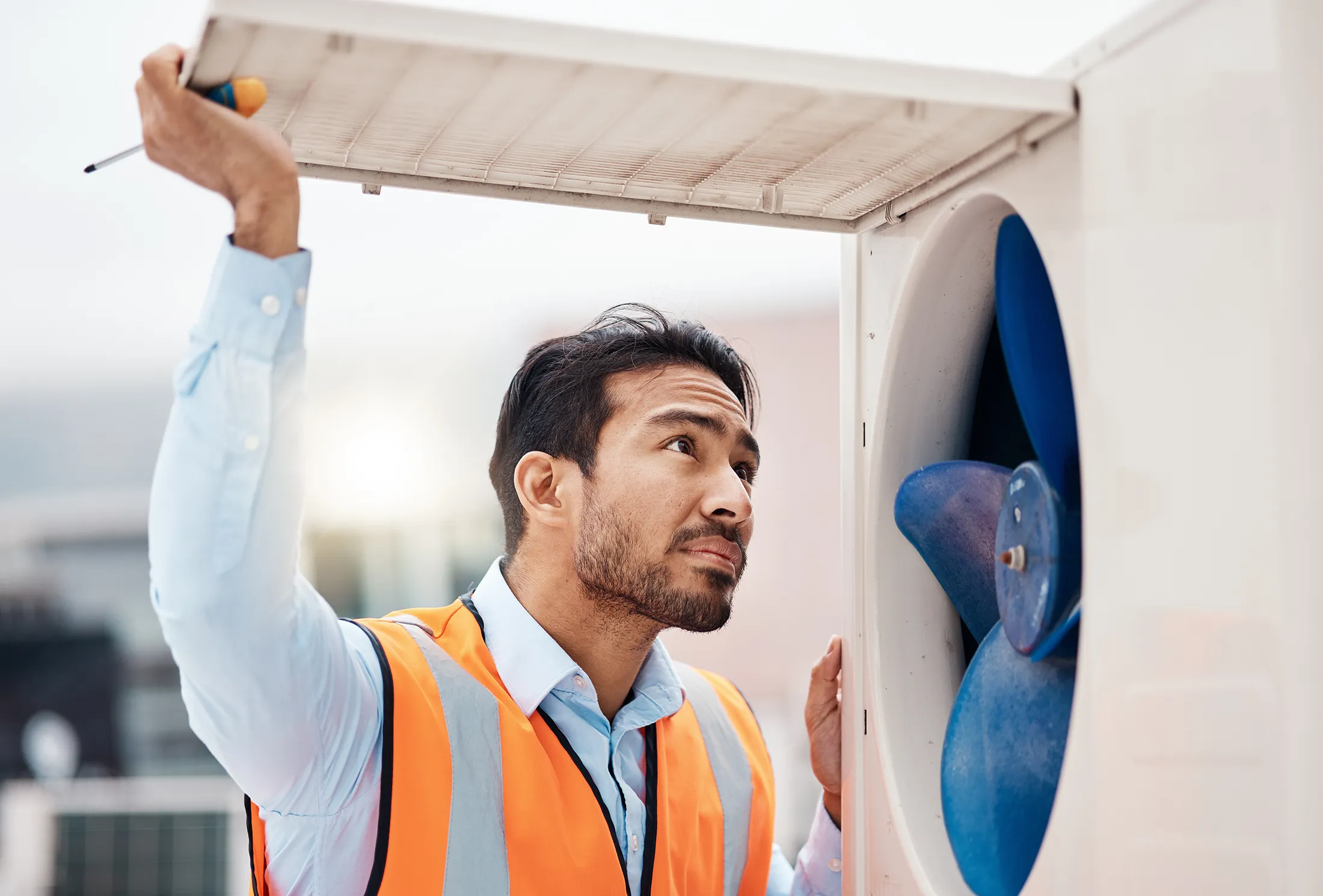
September 30, 2025
Introduction
Ensuring optimal building performance starts with understanding how airtight your structure really is. A blower door test is one of the most effective ways to evaluate air leakage and identify opportunities to improve energy efficiency, indoor comfort, and code compliance. But how do you prepare for it to ensure accurate results and a smooth commissioning process?
This blog will guide you through best practices for getting your building ready for a blower door test, from pre-test checklists to sealing strategies, so you can avoid delays and maximize the value of your HVAC commissioning efforts.
Did you know that unaddressed air leaks can increase energy bills by up to 30%? Whether you’re a building owner in Tampa or a facility manager overseeing projects across Central Florida, preparing properly for this test can significantly impact performance outcomes. Let’s walk through how to set your building up for success step by step.
Why a Blower Door Test Matters for Your Building
Blower door tests are not just an energy-efficiency checkbox. They are critical for:
- Evaluating air tightness in new and existing buildings
- Identifying leakage areas that compromise HVAC performance
- Meeting energy code requirements, including IECC and Florida Building Code
- Supporting LEED certification and green building goals
- Improving occupant comfort and indoor air quality
For projects across Tampa, Orlando, and surrounding areas, a properly executed blower door test ensures systems are performing as designed and provides a clear path to resolving performance gaps.
Pre-Test Building Preparation Checklist
Before SITA-TAB arrives on site, preparing the building helps ensure efficient and accurate testing. Use this checklist:
- Close all exterior windows and doors
- Open all interior doors to equalize pressure zones
- Shut off HVAC systems temporarily during the test
- Seal intentional openings, such as exhaust fans, fireplaces, and flue dampers
- Remove debris or obstructions near doorways where testing equipment will be placed
- Notify occupants or teams of planned test times and expected pressure changes
These steps create a controlled environment and reduce false readings that could compromise commissioning documentation.
Common Issues That Can Affect Test Results
Blower door testing is sensitive to environmental and structural conditions. Watch out for:
- Unsealed penetrations in walls, ceilings, or mechanical rooms
- Improperly weather-stripped doors or windows
- Hidden bypasses, such as above ceiling tiles or behind access panels
- Leaky ductwork, especially in unconditioned spaces
- Improperly installed insulation or vapor barriers
By addressing these issues proactively, your project avoids failed tests, costly delays, and rework during the commissioning process.
What to Expect During the Test
Understanding the testing process helps streamline the visit:
- Setup: A calibrated blower door fan is installed in an exterior door opening.
- Pressurization and depressurization: The fan measures airflow required to maintain a set pressure, revealing leakage rates.
- Diagnostics: SITA-TAB technicians may use infrared cameras or smoke pencils to locate specific leaks.
- Reporting: You’ll receive a detailed report documenting air leakage, compliance, and recommendations for remediation if needed.
This process usually takes a few hours depending on building size and complexity.
Partnering with Certified Experts Matters
Not all testing providers deliver the same level of accuracy. As a third-party AABC, NEBB, and ACG certified firm, SITA-TAB ensures:
- Independent, unbiased results
- Accurate documentation for code officials and LEED consultants
- Field-tested experience across Florida’s climate zones
- Efficient test scheduling with minimal disruption to your project timeline
We serve commercial buildings, mixed-use developments, and institutional facilities across Tampa, Orlando, Lutz, Sarasota, and beyond.At SITA-TAB, we understand that every building presents unique challenges. That’s why we tailor our blower door testing approach to meet the specific requirements of each project, whether it’s a new commercial build in downtown Tampa or a retrofit facility in Sarasota. Our field technicians work closely with your design and construction teams to ensure the testing process integrates seamlessly with your project timeline. By investing in third-party testing with certified experts, you gain peace of mind knowing your building systems are verified, efficient, and fully documented for compliance and performance from day one.
Conclusion: Set the Stage for a Successful Blower Door Test
Preparing for a blower door test isn’t complicated, but it is critical. From sealing openings and closing windows to understanding what the test involves, a few key steps can make a major difference. Addressing common problem areas and working with a certified third-party provider like SITA-TAB ensures accurate results, code compliance, and greater long-term efficiency.
The takeaway? A well-prepared test not only verifies building envelope performance, it supports your HVAC system’s success, boosts energy savings, and helps achieve your sustainability goals.
Schedule HVAC commissioning and test and balance services with SITA-TAB today to maximize building performance and comply with AABC and NEBB standards. Our team of certified professionals is ready to support your projects across Tampa, Orlando, Lutz, Sarasota, and surrounding Florida communities.
Contact us now for expert guidance and reliable performance verification

